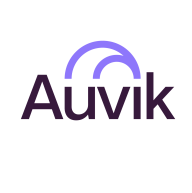

Auvik Network Management has definitely helped reduce business disruptions related to network issues.
Auvik Network Management saves me 40% to 50% of our time.
If the network goes down, Auvik Network Management (ANM) opens a ticket, and then we begin working on it.
They were knowledgeable and responded quickly with accurate and useful information.
They introduced the product to us and explained how to deal with it.
I would give Auvik Network Management support a ten out of ten.
The platform scales well and supports our organizational needs.
It was capable of handling all those clients perfectly.
We keep adding sites into Auvik Network Management, and it doesn't seem to affect performance or anything on our end.
If the user interface isn’t presenting data well, it becomes difficult to manage when scaling.
A lot of platforms, especially when it comes to CRMs, CMSs, and ERPs, are still built on PHP and MySQL, which I feel is archaic now and slow to query.
In terms of stability, I would rate Auvik Network Management as a ten out of ten, as it does not experience jitter or other major issues.
Auvik's automated reporting system also details interferences or any lagging other than outside interference from electrical sources.
It is very stable.
We were unable to integrate Auvik with a geographical map, which limited our ability to track issues to specific buildings on campus.
Enhancements in API functionality and wider tool support for integration with PSA or RMM tools.
Auvik does a good job of nesting those devices. For example, a bunch of different servers will all be nested in one icon on the map, and when opened up, all those multiple servers can be seen.
Many tools have poor user interfaces, making them hard to manage and navigate.
The GUI could be improved. It's a bit too basic.
Auvik is pricey, and we were paying a lot for it, especially when compared to SolarWinds.
The pricing for Auvik Network Management (ANM) is great; it is comparable to other solutions, and for what it does, it actually provides more value for the money than some of the other major competitors.
Auvik Network Management (ANM) pricing or licensing is about 2,500 per year for approximately 4,000 endpoints, which is quite reasonable.
We are using the free, open-source version.
The pricing for the Nagios XI product is good and better than other solutions.
Auvik Core's ease of use also enhanced troubleshooting speed and efficiency.
Its proactive monitoring and simplified troubleshooting have significantly impacted our efficiency in handling network management tasks.
We can go to different places and monitor, check, configure, and analyze traffic.
Nagios XI simplifies our setup and reduces the time spent configuring monitoring tools.
The alerting system is very effective.
| Product | Market Share (%) |
|---|---|
| Auvik Network Management (ANM) | 0.8% |
| Nagios XI | 3.5% |
| Other | 95.7% |


| Company Size | Count |
|---|---|
| Small Business | 140 |
| Midsize Enterprise | 31 |
| Large Enterprise | 22 |
| Company Size | Count |
|---|---|
| Small Business | 22 |
| Midsize Enterprise | 17 |
| Large Enterprise | 21 |
Auvik Network Management provides comprehensive network monitoring with competitive pricing, offering advanced features and free management of non-critical devices.
Auvik Network Management is known for its intuitive interface and real-time network visibility. Users benefit from features like automated network discovery, mapping, alerting, and TrafficInsights for cost-effective bandwidth monitoring. Its integration with ConnectWise and ticketing systems enhances device inventory updates, SNMP monitoring, and network troubleshooting. However, improvements are needed in reporting, integration capabilities, network map accuracy, customization, and alert configuration. Users suggest expanding device support and improving navigation and monitoring features.
What are Auvik's most important features?Auvik Network Management is widely used by managed service providers and enterprises for network monitoring across industries. It enables efficient management of firewalls, switches, routers, and ensures connectivity over multiple locations. This solution aids in identifying issues, automating backups, and facilitating remote access, offering critical insights on network traffic and device performance. Companies leverage its features to enhance network management and performance.
Nagios XI provides monitoring of all mission-critical infrastructure components, including applications, services, operating systems, network protocols, systems metrics, and network infrastructure. Third-party add-ons provide tools for monitoring virtually all in-house and external applications, services, and systems.
Nagios XI uses a powerful Core 4 monitoring engine that provides users with the highest levels of server monitoring performance. This high degree of performance enables nearly limitless scalability and monitoring powers.
With Nagios XI, stakeholders can check up on their infrastructure status using the role-based web interface. Sophisticated dashboards enable access to monitoring information and third-party data. Administrators can easily set up permissions so users can only access the infrastructure they are authorized to view.
Nagios XI Benefits and Features
Some of the benefits and top features of using Nagios XI include:
Reviews from Real Users
Nagios XI stands out among its competitors for a number of reasons. Several major ones are its integration options and monitoring abilities, as well as its alerting features.
David P., a senior DevOps engineer at EML Payments Ltd, writes, “We use Nagios as a network discovery tool. We use Nagios to maintain our uptime statistics and to monitor our services. It has allowed us to be much more sophisticated in our monitoring and alerting.”
An IT-OSS manager at a comms service provider notes, “Nagios XI has a custom API feature, and we can expose custom APIs for our integration. This is a great feature.”
We monitor all IT Infrastructure Monitoring reviews to prevent fraudulent reviews and keep review quality high. We do not post reviews by company employees or direct competitors. We validate each review for authenticity via cross-reference with LinkedIn, and personal follow-up with the reviewer when necessary.